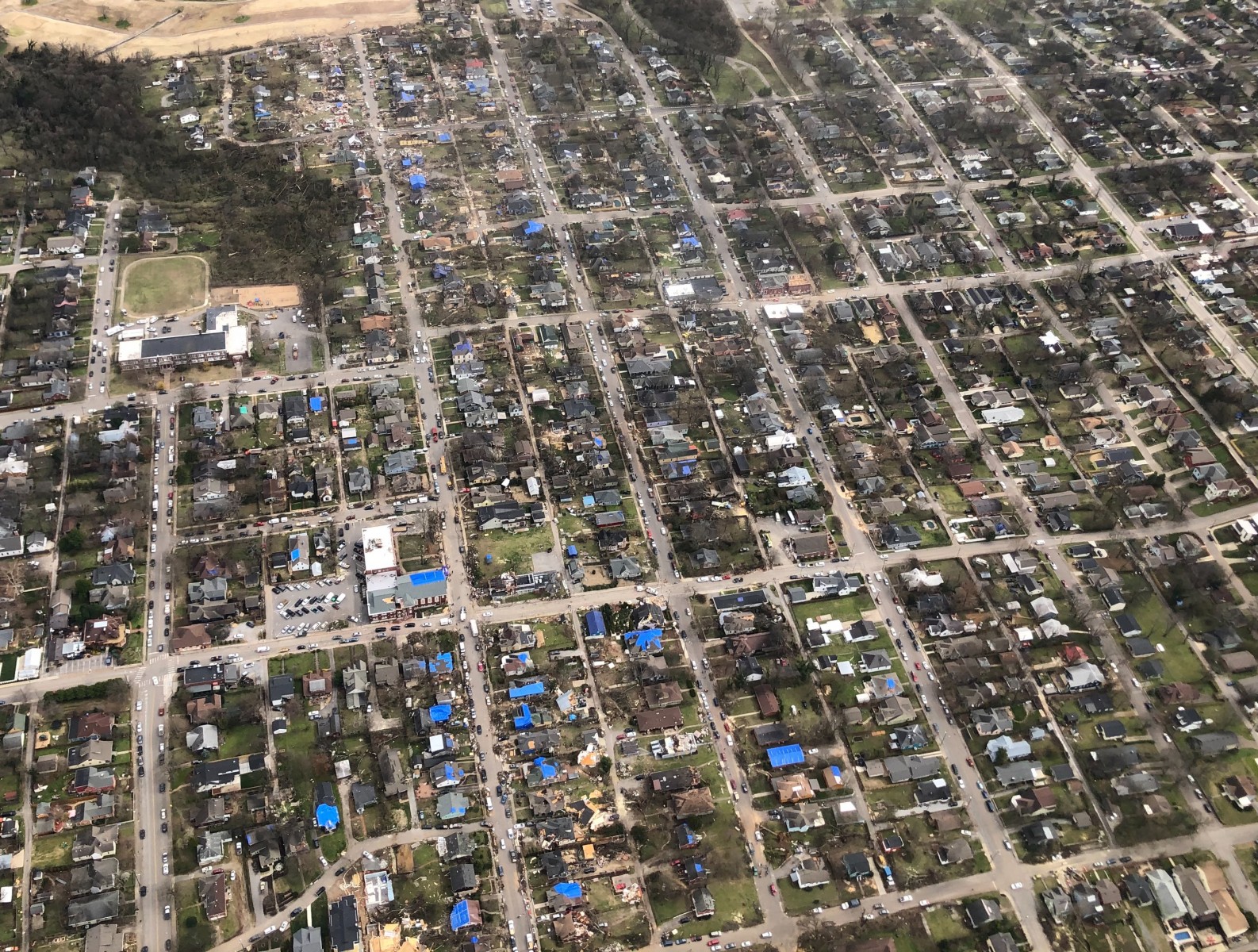Tenn. Wing Photographs Nashville Tornado Damage
1st Lt. Lauren Divers
Assistant Public Affairs Officer
Music City Composite Squadron
Tennessee Wing
The Tennessee Wing generated thousands of aerial images of damage Thursday in the wake of the deadly tornado that struck Nashville and surrounding mid-state communities two days earlier.
In all, the wing conducted nine flights – four devoted to aerial photography, four to relocate key personnel and one to observation – and also deployed a pair of ground teams.
Lt. Col. Rob Borsari, the wing’s director of operations, said the wing’s missions followed requests for aid from various agencies, as well as the U.S. Small Business Administration.
“This is a very difficult mission due to the scale of the damage and the human tragedy,” Borsari said. “We have flown a total of 15 hours and collected thousands of images of the damaged areas.”
One of the wing’s planes, a Cessna 182, was destroyed on the ground when the EF-4 tornado struck John C. Tune Airport in Nashville early Tuesday.
Lt. Col. Charles Watson, incident commander for the wing’s response, said one of the aerial photography missions involved a special WaldoAir camera system that provides a multi-spectral view of the ground, resulting in 360-degree, 3D images of the areas covered. Specialists can review the images from all angles in assessing damage and generating estimates for debris collection.
In 2018 the wing was the first in Civil Air Patrol to test the WaldoAir system, Watson said.
“This technology vastly increases the ability of FEMA (the Federal Emergency Management Agency) and other agencies to review and assess damage using computers versus attempting to make the same assessments on the ground without the advantages of a 3D model,” he said.
Col. Dent Young, Tennessee Wing commander, said CAP emergency services personnel practice monthly to remain ready when called for assistance.
“This is a testament to the various communities throughout the state that host CAP units, aircraft, radio communications equipment, vehicles and, most important, the trained members ages 12 and up who provide valuable service to our communities, state and nation,” Young said.



